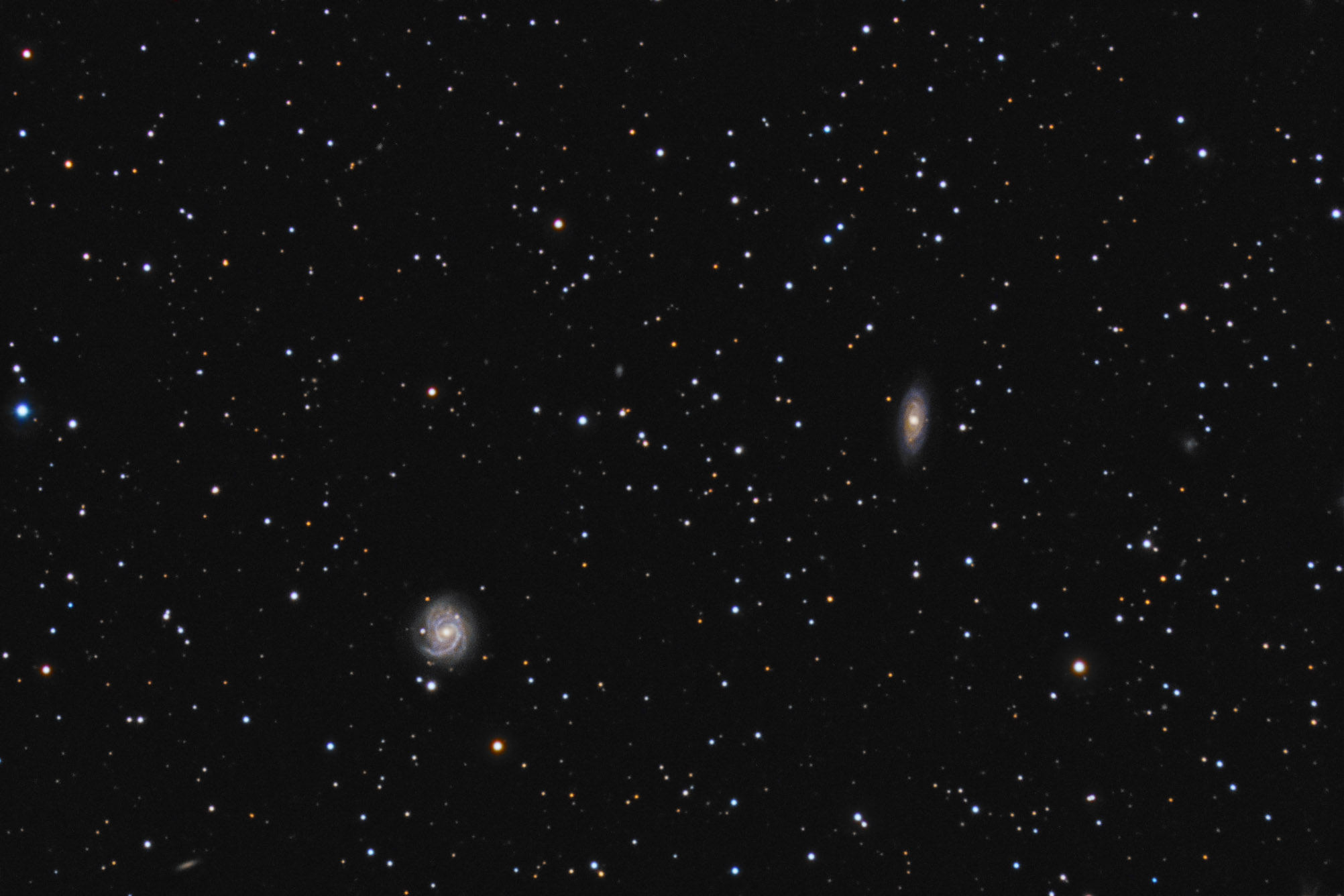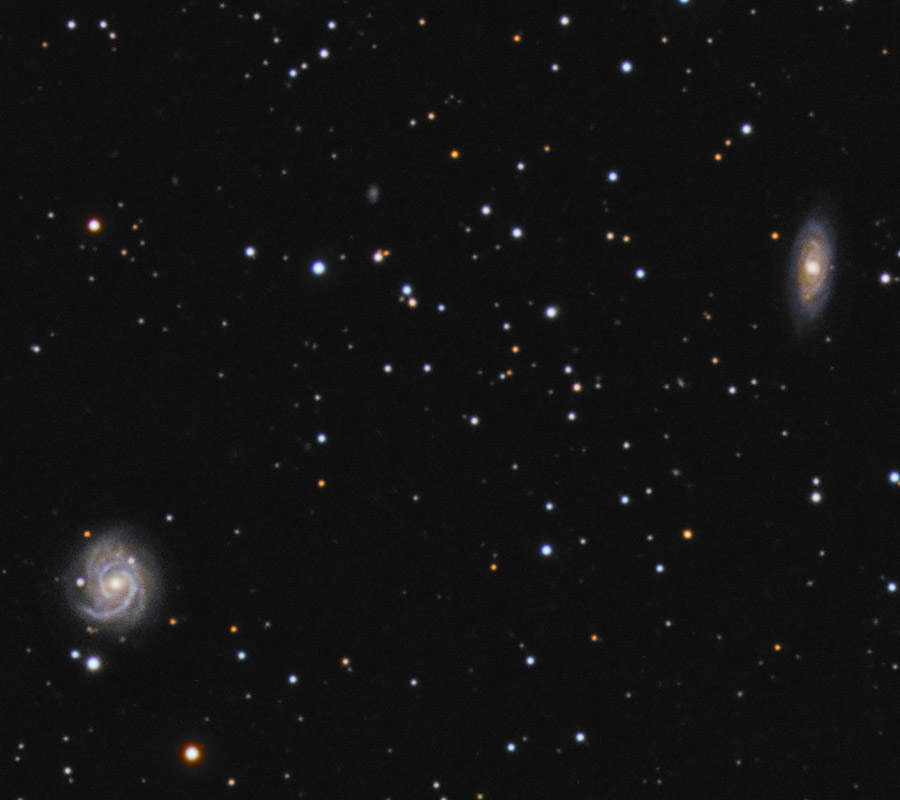Object name: NGC2884Designation(s): NGC2884, NGC2889, NGC 2884 and 2889 are a considered a galaxy pair in Hydra. They apparently are only an optical pair as NGC 2884 has a redshift based distance of 250 million light-years while NGC 2889 is only 170,000 light-years distant. While they appear somewhat the same size when the distance difference is taken into account you find NGC 2884 is much larger at nearly 160,000 light-years in diameter making it a very large spiral while NGC 2889 is only about 95,000 light-years across, a bit smaller than our galaxy
NGC 2889 attracted my interest as it fits Arp's category for galaxies with one heavy arm. It does so to my eye better than some he did include. It is classed as SAB(rs)c at NED. The NGC Project say Sb+. So the NGC project says it doesn't have a bar though to my eye it has a short one running nearly east-west, a bit tipped to the north at the west end. Its spiral structure is only slightly blue indicating it has few if any really recent star formation going on in it. It was discovered by William Herschel on March 19, 1786 and is in the second Herschel 400 object list.
NGC 2884 is a rather normal looking spiral seen rather edge on that's unusually large as already mentioned. Its core region is quite red but the outer arms quite blue so there's quite an age difference in the stars in this galaxy compared to the rather blah coloration of NGC 2889. It is classed as S0/a? by NED and Sa by the NGC project. While Herschel found 2889 he somehow missed NGC 2884 which wasn't discovered until 79 years later by Heinrich d'Arrest.
This part of the sky is poorly studied for galaxies. Only these two galaxies had distance data and most of the others you see in my image aren't even mentioned at NED as galaxies. The edge on at the bottom edge left of center is only listed as an Ultraviolet Source even though it is obviously a galaxy. Due to the dearth of information, I didn't prepare an annotated image.
As was common this spring skies were awful which was compounded by an aurora brightening the sky and playing havoc with color balance. Seeing the field was being washed out by skies over 10 times brighter than normal I started to take a second round the next night. However, conditions quickly went even sourer and only one luminance frame was obtained before the observatory shut itself down. I decided to go with what I had even though with the very bright sky it is much noisier than I'd normally allow. But then that's the norm for this spring it seems.
14" LX200R @ f/10, L=5x10' RGB=2x10', STL-11000XM, Paramount ME Related Designation(s):2MASS J09262453-1133202, 2MASS J09271257-1138363, 2MASX J09262451-1133207, 2MASX J09271259-1138363, 2MASXi J0926243-113315, 2MASXi J0927122-113832, 6dF J0926245-113321, 6dFGSv 04861, AKARI J0927125-113830, CGS 311, GALEXASC J092624.47-113321.7 , GALEXASC J092712.68-113838.0 , HDCE 0529 NED003, HIPASS J0926-11, IRAS 09247-1125, IRAS F09240-1120, IRAS F09248-1125, LDCE 0642 NED003, MCG -02-24-022, MCG -02-24-026, NGC 2884, NGC 2889, NGC2884, NGC2889, NVSS J092624-113353, NVSS J092712-113837, PGC 026773, PGC 026806, | | 
